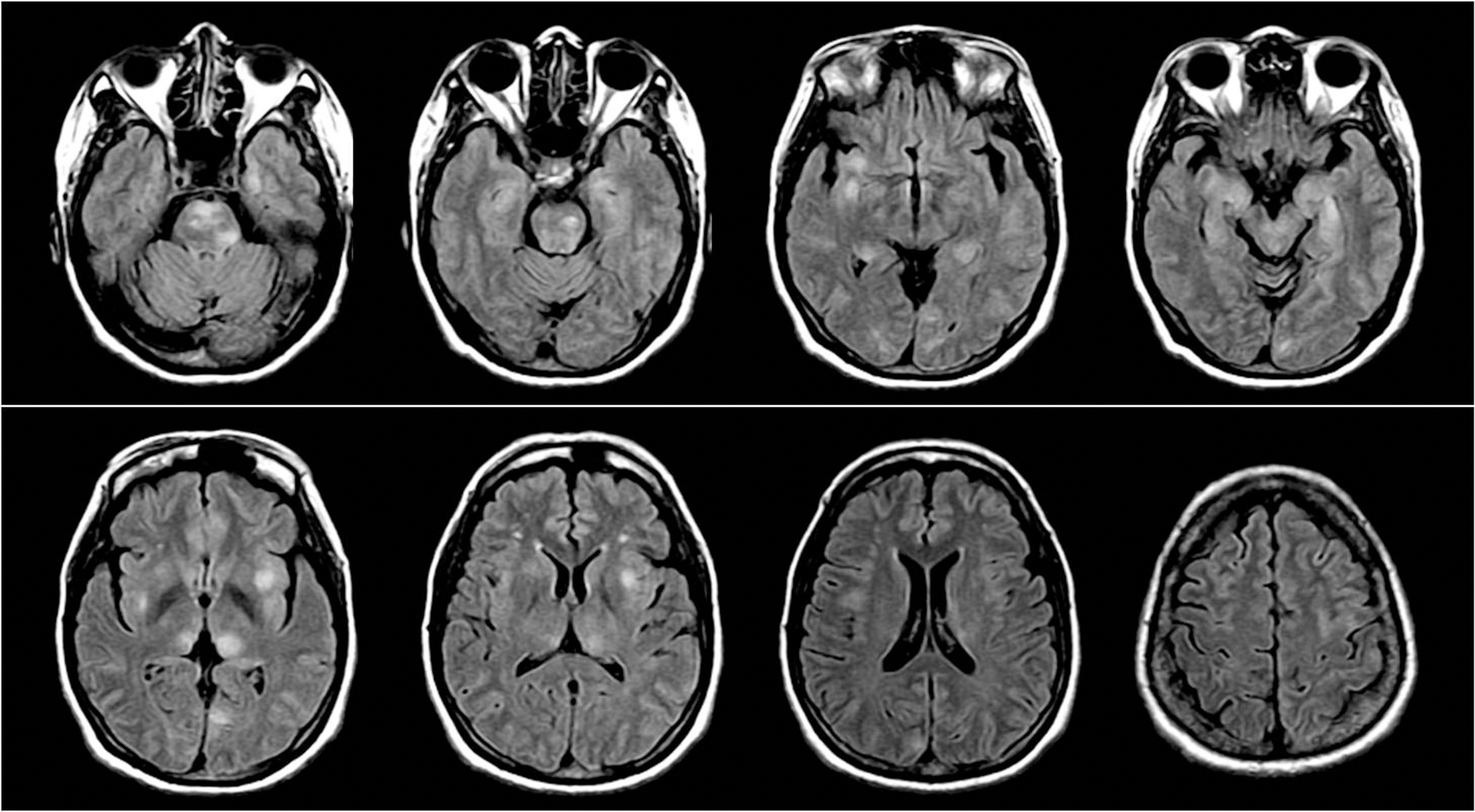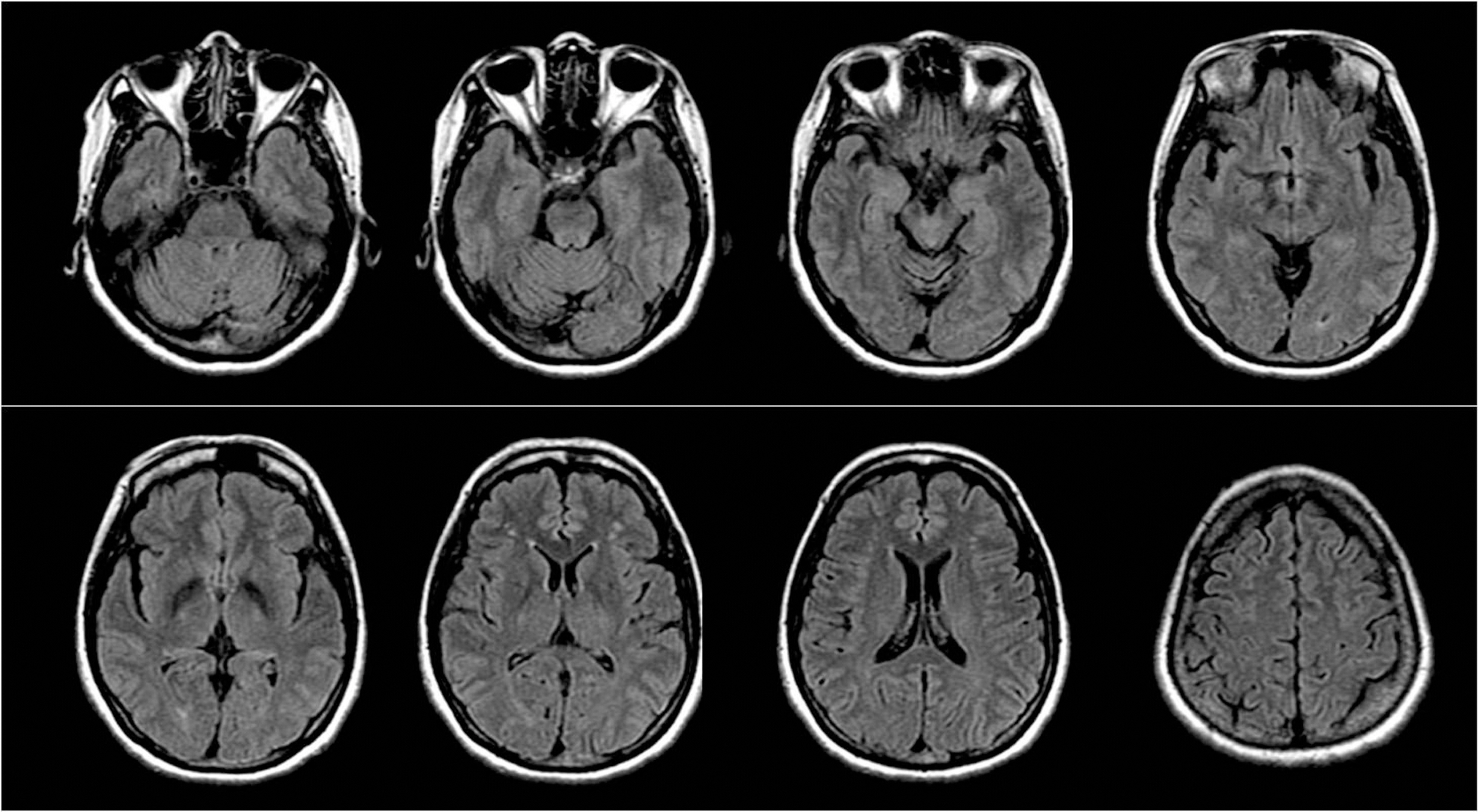Kosin Med J.
2015 Dec;30(2):181-185. 10.7180/kmj.2015.30.2.181.
Meningoencephalitis associated with Parvovirus B19 Infection in an Immunocompetent Patient
- Affiliations
-
- 1Department of Neurology, College of Medicine, Kosin University, Busan, Korea. ybgne@kosinmed.or.kr
- KMID: 2150506
- DOI: http://doi.org/10.7180/kmj.2015.30.2.181
Abstract
- Parvovirus B19 (PVB19) infection is a rare cause of meningoencephalitis. A 53-year-old previously healthy woman presented with fever, headache, and multiple erythema on the both legs. Cerebrospinal fluid study revealed pleocytosis and elevated opening pressure and protein level. Brain MRI showed multiple, asymmetric, hyperintensity in the brain stem, basal ganglia, white matter, and gray matter. Anti-B19 IgM antibody and PCR for PVB19 were positive in serum. Clinician should consider PVB19 infection in any case of acute febrile illness with erythema and meningoencephalitis.
Keyword
MeSH Terms
Figure
Reference
-
References
1. Koch WC. Fifth (human parvovirus) and sixth (herpesvirus 6) diseases. Curr Opin Infect Dis. 2001; 14:343–56.
Article2. Douvoyiannis M, Litman N, Goldman DL. Neurologic manifestations associated with parvovirus B19 infection. Clin Infect Dis. 2009; 48:1713–23.
Article3. Barah F, Vallely PJ, Cleator GM, Kerr JR. Neurological manifestations of human parvovirus B19 infection. Rev Med Virol. 2003; 13:185–99.
Article4. Barah F, Vallely PJ, Chiswick ML, Cleator GM, Kerr JR. Association of human parvovirus B19 infection with acute meningoencephalitis. Lancet. 2001; 358:729–30.
Article5. Bonvicini F, Marinacci G, Pajno MC, Gallinella G, Musiani M, Zerbini M. Meningoencephalitis with persistent parvovirus B19 infection in an apparently healthy woman. Clin Infect Dis. 2008; 47:385–7.
Article6. Tonnellier M, Bessereau J, Carbonnell N, Guidet B, Méritet JF, Kerr JR, et al. A possible parvovirus B19 encephalitis in an immunocompetent adult patient. J Clin Virol. 2007; 38:186–7.
Article7. Broliden K, Tolfvenstam T, Norbeck O. Clinical aspects of parvovirus B19 infection. J Intern Med. 2006; 260:285–304.
Article8. Young NS, Brown KE. Parvovirus B19. N Engl J Med. 2004; 350:586–97.
Article9. Kerr JR, Barah F, Chiswick ML, McDonnell GV, Smith J, Chapman MD, et al. Evidence for the role of demyelination, HLA-DR alleles, and cytokines in the pathogenesis of parvovirus B19 meningoencephalitis and its sequelae. J Neurol Neurosurg Psychiatry. 2002; 73:739–46.
Article10. Isumi H, Nunoue T, Nishida A, Takashima S. Fetal brain infection with human parvovirus B19. Pediatr Neurol. 1999; 21:661–3.
Article
- Full Text Links
- Actions
-
Cited
- CITED
-
- Close
- Share
- Similar articles
-
- Human Parvovirus B19 Infection in Patients with Fibromyalgia
- Human Parvovirus B19 and Rheumatoid Arthritis in Korea
- Clinical Characteristics of Human Parvovirus B19 Infection in Children
- Parvovirus B19 Infection in a Child with Acute Lymphoblastic Leukemia during Maintenance Chemotherapy
- Relationship between Myelodysplastic Syndrome and Epstein-Barr Virus or Human Parvovirus B19 Infection



